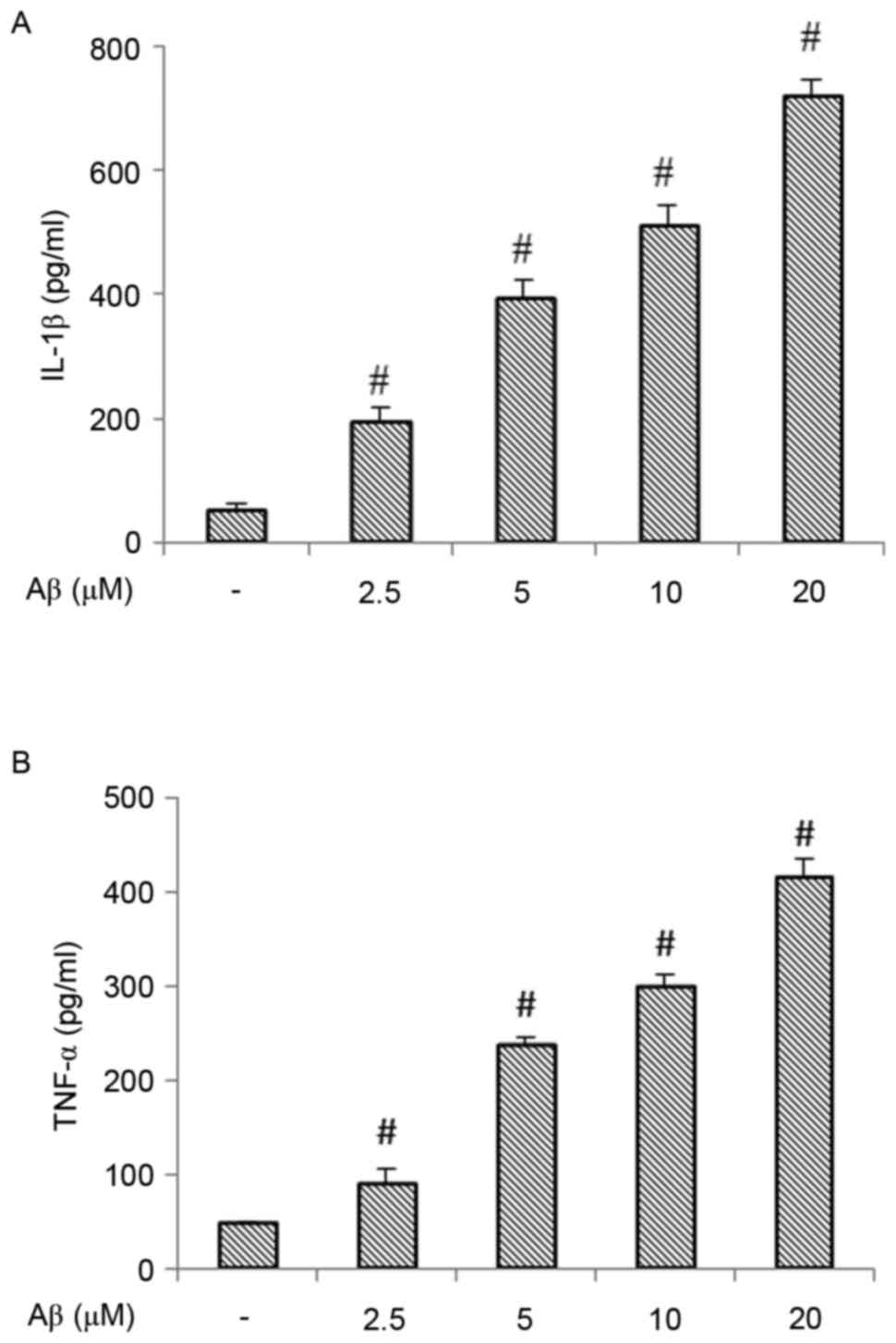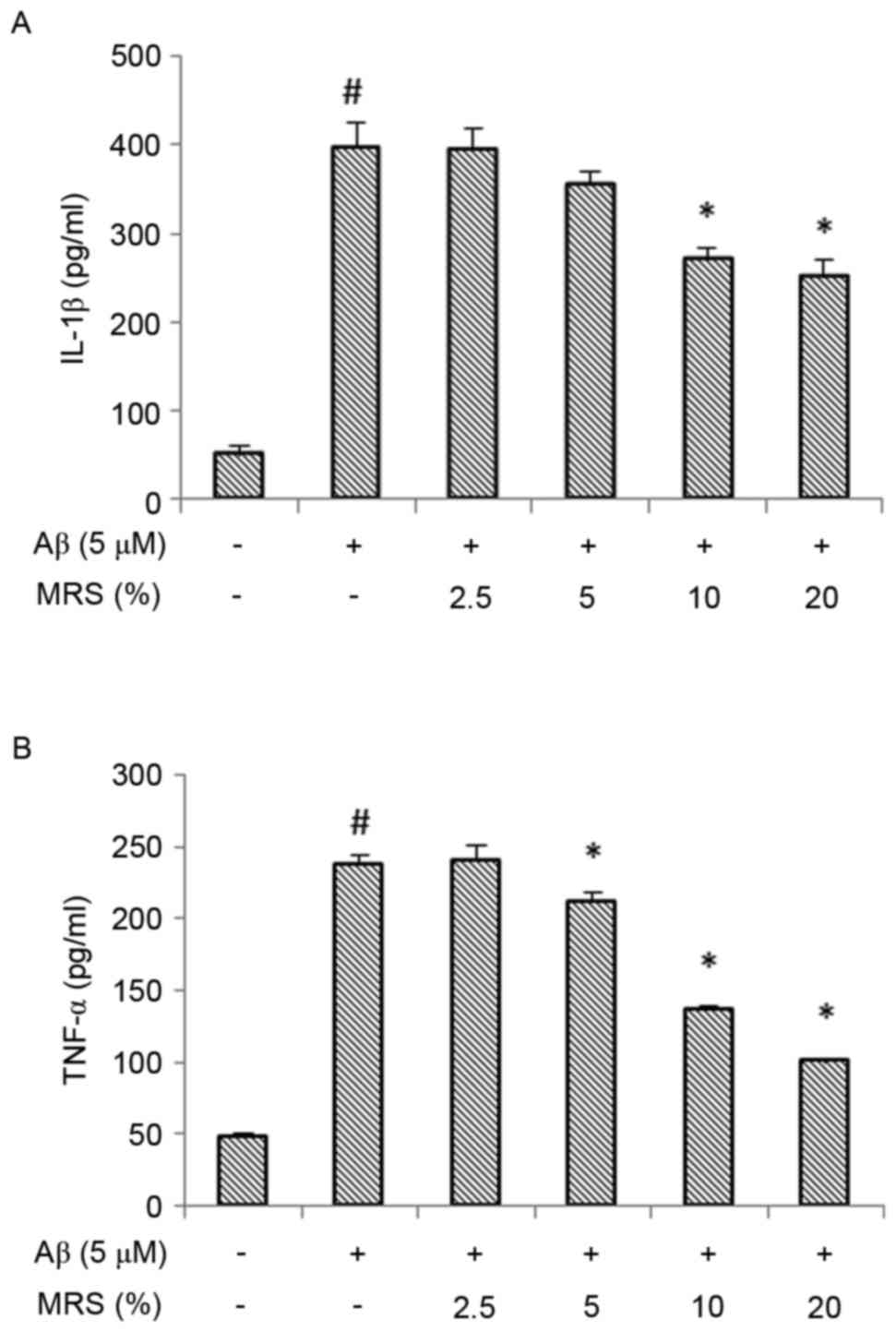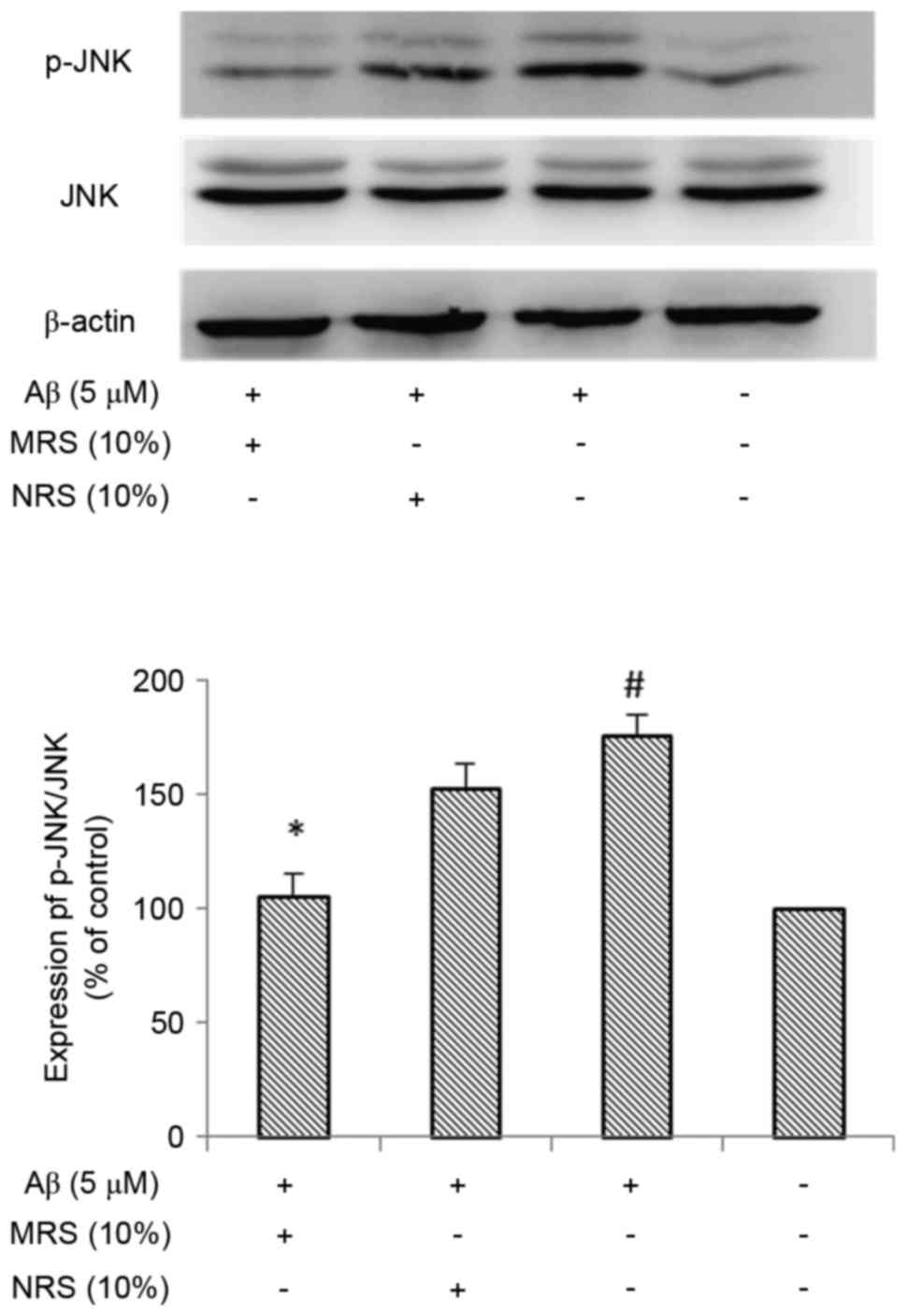Serum containing Gengnianchun formula suppresses amyloid β‑induced inflammatory cytokines in BV‑2 microglial cells by inhibiting the NF‑κB and JNK signaling pathways
- Authors:
- Published online on: January 31, 2018 https://doi.org/10.3892/mmr.2018.8524
- Pages: 5043-5048
-
Copyright: © Chen et al. This is an open access article distributed under the terms of Creative Commons Attribution License.
Metrics: Total
Views: 0 (Spandidos Publications: | PMC Statistics: )
Total PDF Downloads: 0 (Spandidos Publications: | PMC Statistics: )
Abstract
As the resident macrophages of the brain's innate immune system, microglial cells are key modulators in the neurodegenerative disease Alzheimer's disease (AD). In particular, the activation and accumulation of microglial cells around amyloid plaques is considered to result in chronic neuroinflammation. Although the pathologic mechanism remains to be fully elucidated, inflammation has been shown to be critical in the pathogenesis of AD. The Gengnianchun (GNC) formula has long been used to treat perimenopausal syndrome clinically, and is particularly effective in improving learning ability and memory. Our previous study demonstrated that GNC formula had an anti‑inflammatory effect and offered neuroprotection in animal experiments. In the present study, the anti‑inflammatory properties of GNC and its underlying mechanism of action were examined in BV‑2 microglial cells. Amyloid‑β peptide (Aβ)‑stimulated microglial cells were examined for the production of proinflammatory cytokines and the underlying signaling pathways. Compared with the normal control group, the protein expression levels of IL‑1β and TNF‑α were significantly increased following treatment with Aβ (P<0.01), but medicated rat serum containing GNC formula (MRS) could significantly attenuated the Aβ‑induced secretion of these pro‑inflammatory cytokines. It was identified by CCK‑8 assay that the viability of the BV‑2 cells was not reduced following treatment with various concentrations of MRS. The phosphorylation of factor‑κB (NF‑κB) and c‑Jun N‑terminal kinase (JNK) was markedly increased following treatment with Aβ, compared with the normal control group (P<0.01). However, treatment with MRS resulted in a significant reduction in the phosphorylation of NF‑κB (P<0.05). These results suggested that MRS suppressed the Aβ‑induced inflammatory response of microglial cells by inhibiting the NF‑κB and JNK signaling pathways. These novel findings provide insights into the development of GNC formula as a therapeutic agent for the treatment of neurodegenerative disorders.














